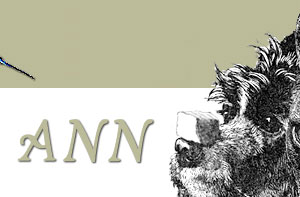THE CAUSE
While cats are generally considered to be carnivorous animals, all cats seem to have some predisposition to eat vegetable matter, whether it be grass, leaves, or house plants. In fact, in approximately one-third of feral cats (i.e. strays and "wild" cats) studied, the stomach contents included grass and vegetation. This suggests that the animals are deliberately eating the vegetation as either a dietary supplement, or as a digestive aid (laxative or purgative). Further, the regular diet of the feral cat includes many small animals, such as mice, that eat vegetable matter. Therefore, the stomachs of prey may be a natural source of partially digested vegetable matter which may be more easily ingested by the cat. If eaten this way, the roughage and fibre may be provided without irritation to the sensitive stomach lining, causing upset.
THE SOLUTION
While there isn't any one solution to the problem of plant eating that will work for all cats, there are a few tricks a distraught owner can try. First, providing a source of fibre or vegetable matter for the cat may eliminate the cat's desire to forage on its own. If the problem is the result of a dietary deficiency, supplement in the form of higher fibre catfood or a small pot of grass or catnip which the cat is allowed to eat may eliminate the problem. Second, removal of plants from accessible locations may provide a physical barrier to grazing. Third, scare tactics may work, and many methods have been suggested. One method uses a water spray bottle which may be either rigged with a string to allow training without the owner's presence being directly associated with the disciplinary action, or simply used whenever the owner catches the animal "in the act". The second technique would be easier to do, but probably less effective because some cats simply learn to misbehave in the absence of the owner. Another scare tactic method involves strategic placement of mousetraps, often overlaid with a sheet of newspaper to prevent their detection by an inquisitive cat. Finally, a technique called aversive taste conditioning can also be very effective. Pepper sauce, vinegar, and other noxious substances are applied directly to the plant leaves where the cat normally chews. Generally, conditioned aversions are most effective when the compound applied (if it produces nausea) is on a new food, so it may work best if applied to a new plant. However, steps may be required to eliminate old favourites from the cat's forbidden plant diet.
WHAT TO DO IF YOU HAVE A PROBLEM CAT
- If practical, simply moving the most frequently assaulted plants
to an inaccessible location may be the simplest solution if there
isn't a dietary deficiency causing the behaviour problem.
- If your cat is an indoor cat, grazing may simply reflect a lack
of natural vegetation in the diet. You could first try providing
an easily accessible pot of grass or catnip for the cat to chew.
- If the behaviour persists, the training methods explained above
may be tried. These methods include:
spray bottle (rigged or manual)
mousetraps
aversive taste/smell conditioning
If none of the suggested methods have caused a significant reduction in the cat's grazing behaviour, perhaps the behaviour is simply destructive behaviour in response to a stressful home environment. Objective assessment of the home and its occupants may provide important information about the suitability of the owner to provide adequate care for the cat both physically and emotionally. Try paying more attention to the cat or changing such stressors as other pets, small children, or an extremely busy schedule, and you may be surprised with the results...GOOD LUCK!!
References
- JBeaver, B.V. Feline Behaviour: A Guide For Veterinarians. W.B. Saunders Company: Philadelphia, PA, 1992. pp 181-182, 191.
- Hart, Benjamin L. The Behaviour of Domestic Animals. W.H.Freeman & Co: New York, 1985. p 195.
- Morgan, M & Houpt, K.A. Anthrozoos. (vol 3:1). Feline behaviour problems: the influence of declawing. 1989. pp 50-53.
Reprinted by permission: Applied Ethology home page |


